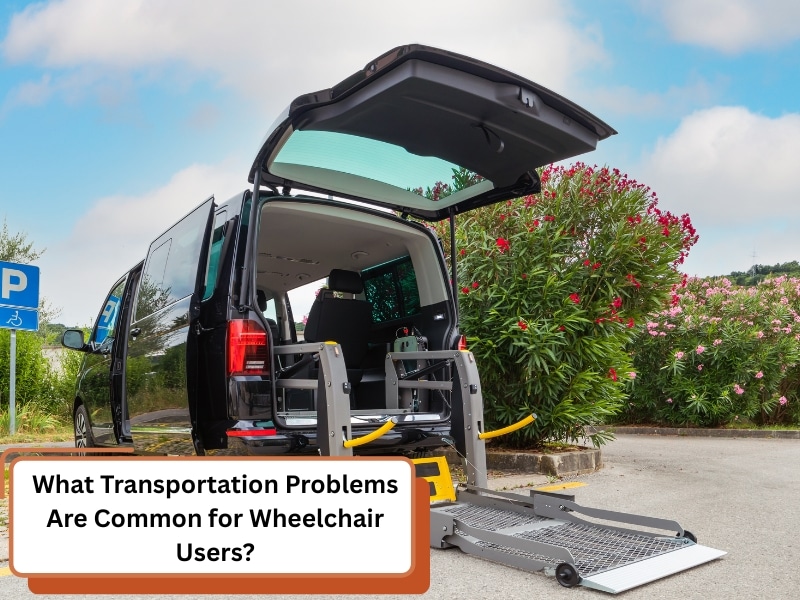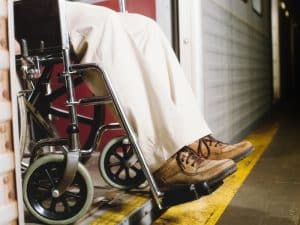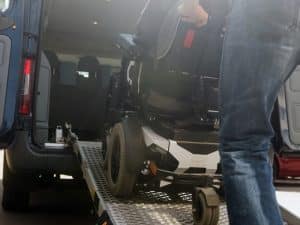Transportation plays a vital role in the daily lives of many, yet for wheelchair users, it often presents unique challenges. From accessing public transport to the lack of accessible vehicles, transportation problems can significantly affect their ability to travel independently and participate in daily activities. This article explores common transportation problems wheelchair users face, how these issues impact their lives, and the role of assisted travel transport in enhancing accessibility.
Why is public transport challenging for wheelchair users?
Public transport is often the go-to mode of travel for many people. Still, for wheelchair users, it can present numerous challenges. Accessibility issues and inadequate infrastructure can make even simple journeys difficult.
- Limited accessibility: Many buses, trains, and trams are not equipped with features such as ramps or lifts to accommodate wheelchairs.
- Inconsistent availability of accessible services: Even when accessible options are available, they are not always easy to find or use.
- Overcrowding: In busy cities, public transport can become overcrowded, making it difficult for wheelchair users to find space or safely board.
- Inadequate staff assistance: Not all transport staff are properly trained to assist wheelchair users, leading to delays and safety concerns.
- Weather-related issues: Rain, wind, and other weather conditions can make it harder to use public transport due to limited shelter and difficulties with ramps.
Public transport often lacks wheelchair accessibility, which can frustrate users. Improved infrastructure, accessible vehicles, and staff training can enhance experiences.
What barriers do wheelchair users face while using public transport?
Wheelchair users often encounter significant barriers when using public transport, affecting their ability to travel quickly and safely. Below is a table summarising the key challenges they face.
Barrier | Impact | Situation |
Lack of ramps or lifts | Prevents boarding | Unable to board buses/trains |
Inadequate seating | Limited options when crowded | No reserved seats |
Unclear signage | Confusion in finding access | Difficulty locating accessible entrances |
Elevator breakdowns | Delays and missed transport | Cannot access platforms |
Inaccessible platforms | Difficulty in accessing stations | Steps or high platforms present |
Despite accessible transport advances, barriers persist, making travel difficult. Governments and agencies must continue working on inclusive solutions.
When do transportation problems most commonly occur?
Transportation problems for wheelchair users are more likely to arise at certain times, typically during rush hours, in bad weather, or while travelling longer distances.
- Rush hour congestion: Public transport is often crowded during peak hours, making it harder for wheelchair users to find space or board.
- Bad weather conditions: Rain, snow, or extreme heat can exacerbate accessibility issues, making travel dangerous due to slippery ramps or a lack of shelter.
- Late-night or early-morning travel: Outside of regular hours, fewer accessible services may be available, making travel difficult for wheelchair users.
- During long trips or holidays, for long-distance travel, wheelchair users may find that accessible services are more limited, particularly on less popular routes.
- On specific transport modes: Some transport modes, such as taxis or rideshares, are often not equipped with wheelchair-accessible features, making it harder to find a suitable vehicle.
Limited options and inconsistent accessible services worsen these issues. Planning and research are essential for a smoother travel experience.
How do transportation problems affect wheelchair users’ daily lives?
Transportation issues can significantly affect wheelchair users’ daily lives. These problems can restrict their ability to work, socialise, or access essential services.
- Limited independence: Without accessible transport, wheelchair users may have to rely on others for basic tasks, which can impact their independence.
- Restricted employment opportunities: Without reliable and accessible transportation, finding and attending work can become challenging, limiting career opportunities.
- Social isolation: The inability to travel freely can lead to feelings of isolation, as wheelchair users may struggle to meet friends or participate in community activities.
- Difficulty accessing healthcare or services: Regular medical appointments or other essential services may be harder to reach, affecting health and well-being.
- Increased stress and frustration: Transportation challenges often cause delays and anxiety, making even routine activities feel like a significant hurdle.
In short, transportation problems affect mobility as well as quality of life, making it essential to address them.
What role does assisted travel transport play in accessibility?
Assisted travel transport is crucial in making travel more accessible for wheelchair users, offering tailored services that meet various needs. Below is a table summarising the key aspects of assisted travel transport and how they contribute to improved accessibility.
Service | Features | Benefits |
Door-to-door | Direct travel to destination | Avoids public transport |
Specialised vehicles | Equipped with ramps/lifts | Safe and accessible rides |
Trained staff | Support with boarding | Ensures safety throughout |
On-demand services | Flexible booking options | Travel when needed |
Support for needs | Medical, leisure, work | Accommodates various needs |
Assisted transport ensures wheelchair users can move freely, safely, and independently. This service addresses many of the barriers presented by traditional transport systems.
How can wheelchair accessible vehicles reduce transportation problems?
Wheelchair accessible vehicles (WAVs) are specifically designed to reduce the barriers that wheelchair users face when travelling. These vehicles offer several advantages over traditional modes of transport.
- Easy access: WAVs feature ramps or lifts that allow wheelchair users to enter and exit without assistance, making the journey more independent.
- Spacious interiors: These vehicles are designed to accommodate wheelchairs and other mobility aids, providing a comfortable ride.
- Safety features: WAVs are equipped with safety straps and secure wheelchair spaces to ensure passengers’ safety during transit.
- Versatility: Whether for individual use or group transport, WAVs come in various sizes and configurations to suit different needs.
- Convenience: Many WAVs can be hired or booked for regular use, making them a reliable solution for everyday transport.
WAVs play a crucial role in tackling the mobility challenges encountered by wheelchair users. They offer a dedicated, safe, and accessible means of transportation that adheres to essential safety standards for wheelchair accessible vehicles.
What support is available for long-distance travel?
Long-distance travel presents unique challenges for wheelchair users, but various supports are in place to ensure a smoother journey.
- Accessible trains and planes: Many airlines and train services offer wheelchair-accessible seating and other facilities to support long-distance travel.
- Booking assistance: Travel agents and online services can help wheelchair users book accessible transport options and make necessary arrangements.
- Companion services: Some services offer the option of a companion to assist with the journey, ensuring that wheelchair users have support throughout.
- Pre-trip assessments: Some travel providers conduct pre-trip assessments to ensure that appropriate arrangements are in place, including accessible seating and travel aides.
- Travel insurance: Certain travel insurance policies cover the needs of wheelchair users, ensuring that assistance is available in an emergency.
Long-distance travel can be more complex for wheelchair users. Still, with the right support systems and by exploring reliable assist travel and transport solutions, it’s possible to enjoy a comfortable and accessible experience.
Conclusion
Transportation problems for wheelchair users are real and present daily challenges. However, these barriers can be reduced with improvements in infrastructure, better planning, and access to assisted travel services. Wheelchair users deserve the same mobility and access to opportunities as anyone else, and it’s up to society to make that happen.
Wondering how assisted travel and transport can make your journey easier? Get in touch with the team at Abundance Healthcare Group.





